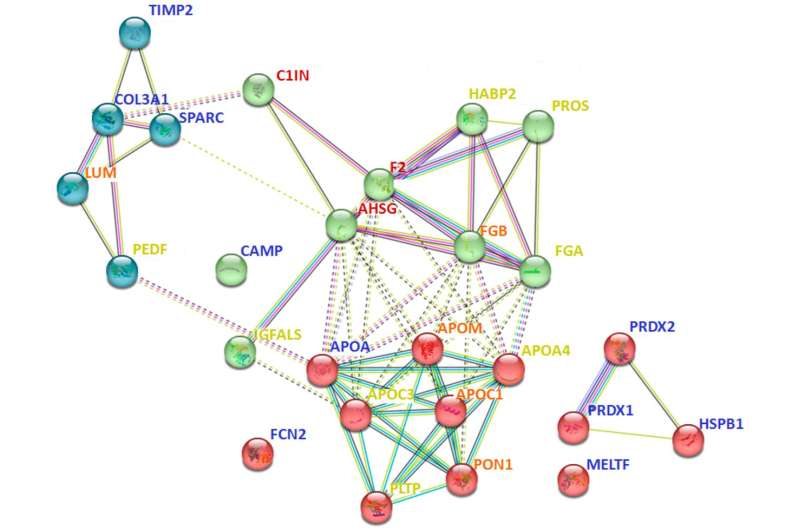This article has been reviewed according to Science X's editorial process and policies. Editors have highlighted the following attributes while ensuring the content's credibility:
fact-checked
trusted source
proofread
Urine test could one day replace biopsy in kidney disease diagnostics

Scientists from Skoltech and Sechenov University have developed an approach for diagnosing chronic kidney disease in its early stages. It relies on a urine sample, analyzing protein content to find pathologies and determine their severity. Such a method could one day replace biopsy, sparing patients the uncomfortable invasive procedure that involves removing a piece of kidney tissue with a needle. The study came out in the journal Molecules.
Chronic kidney disease is a leading public health concern. It involves the gradual loss of kidney function, typically over a period of years. In the terminal stages, the patient cannot survive without a kidney transplant or artificial blood purification (dialysis).
Healthy kidneys filter blood by removing the waste products of human metabolism and retaining proteins, which the body needs to function. Only a tiny fraction of the proteins ends up in the urine and is lost. When kidneys are compromised, protein concentration in the urine is dramatically elevated.
While high protein content in urine is generally a sign of impaired kidney function, it does not indicate the underlying condition: Chronic kidney disease can be caused by diabetes, high blood pressure, inflammation, lupus, and structural abnormalities, including cysts and cancer.
To tell which kind of kidney disease is affecting a patient and how severe it is, physicians require a tissue sample. But biopsy cannot be repeated often, is painful and generally inconvenient compared with body fluid tests. This is why a team of scientists from Skoltech, Sechenov University, and elsewhere is working on a test system that would differentiate between the various types of kidney disease and their stages based on a urine sample.
"The paper in Molecules documents the pilot phase of our project. We present a list of proteins whose concentrations in the urine may indicate the type and severity of the pathology underlying chronic kidney disease. So far the test works on three types of pathologies: focal segmental glomerulosclerosis and the minimal change disease that often precedes it, as well as membranous nephropathy, which has a different origin," said the study's first author, Senior Research Scientist Alexey Kononikhin of Skoltech Bio.
The team determined the specific proteins and their urine concentrations characteristic for each of the three diseases by analyzing samples from three groups of late-stage patients with the respective diagnoses and a control group of healthy subjects. The candidate proteins for this list of disease markers came from the researchers' prior study of blood proteins.
The concentrations were measured using mass spectrometry with isotope-labeled standards. This analytical technique has already been successfully applied by the Laboratory of Omics Technologies and Big Data for Personalized Medicine and Health—headed by the study's principal investigator, Skoltech Professor Evgeny Nikolaev—for the development of new molecular diagnostic methods.
The researchers plan to expand the project by adding more specific urine proteins originating in the kidney tissues to the panel, as well as by analyzing samples from patients with other types of kidney pathologies to make the future test more accurate.
"There aren't that many studies of this kind," Kononikhin said. "Confining ourselves to kidney pathologies, we are only aware of two other papers that present protein panels with diagnostic potential. Ours and those two studies complement each other well."
More information: Alexey S. Kononikhin et al, Targeted MRM Quantification of Urinary Proteins in Chronic Kidney Disease Caused by Glomerulopathies, Molecules (2023). DOI: 10.3390/molecules28083323


















